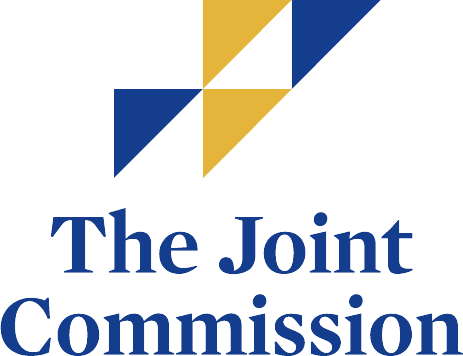In the last few years, opioid addiction has become an increasing problem. According to the Centers for Disease Control and Prevention (CDC), from 1999-2018, nearly 450,000 people have died of an opioid overdose, including illicit and prescription opioids.
Just because many of the opioids on this list are prescription doesn’t make them safe. Most opioids are controlled substances that have a high potential to be abused. When abused, all opioids are very addictive. And in a 2017 CDC report, the average prescribing rate of opioids was 58.7% per 100 people.
Moreover, as a person abuses opioids, their tolerance increases, making their body crave higher doses. To break free from dependency, many seek help through opioid detox programs. However, not all opioids have the same potency. In this article, we list the most commonly abused opioids, ranked from weakest to strongest.
What are Opioids and how do they work?
Opioids are a kind of drug that is naturally found in the opium poppy. They can be natural, semisynthetic, or synthetic. This class of drugs works in the brain to produce various effects, mainly to relieve pain. Opioids range from prescription medication (often referred to as painkillers) to street drugs like heroin.
Many prescription opioids treat moderate to severe pain, blocking pain signals between the body and the brain. In addition to managing pain, this type of drug can give some people a “high,” happy, or relaxed feeling, which can be addictive. Additional opioid side effects include:
- Drowsiness
- Slowed breathing
- Constipation
- Nausea
- Confusion
How are opioids taken?
There are a variety of ways one can take opioids. These include:
- Implanted pump
- Nasal spray
- Orally ingested (pill or liquid)
- Tablet dissolved between the gum and cheek or under the tongue
- Skin patch
- Injected into vein, muscle, or space around the spinal cord
- Suppository
What Is the Strongest and Weakest Opioid?
-
Fentanyl
Fentanyl is one, if not the strongest, and most dangerous opioid. This synthetic opioid is taken to treat severe pain, often after surgery, and is 50 times more potent than heroin. Although it is a prescription drug, it has become a popular street drug to abuse.
Because it is incredibly potent and relatively cheap, many street dealers mix fentanyl with heroin, potentially leading to a life-threatening overdose. The risk of an overdose is exceptionally high to those with little to no tolerance to opioids, even if they take the smallest amount.
-
Heroin
The second most potent opioid is heroin, and it comes from morphine. Unlike most opioids, heroin does not have a medical purpose. This illegal substance has a very high potential for abuse. Heroin comes as either a white or brownish powder (pure) or a black tar-like substance.
Whether the drug was smoked, snorted, or injected, it quickly enters the bloodstream, causing intense euphoric feelings. Furthermore, no matter the form and method of ingestion, heroin is very dangerous and can lead to an overdose.
Heroin is particularly dangerous because secret and illegal laboratories produce them. It is also sometimes cut with other dangerous substances, like fentanyl.
-
Hydromorphone (Dilaudid)
Commonly known by its brand name Dilaudid, hydromorphone is a prescription pain reliever used to treat severe pain. And because it is considerably stronger than morphine, it can lead to extreme relaxation and sedation.
This drug can be injected or dissolved. People who use hydromorphone can instantly feel the effects similar to those of heroin. Subsequently, this is why people who struggle with an opioid use disorder take hydromorphone as an alternative to heroin.
-
Oxymorphone (Opana)
Opana is the brand name of oxymorphone. Medically, it is used to treat moderate to severe pain. But it still has a high potential for abuse. Although it’s typically taken in pill form, there is a liquid variation for injection.
-
Methadone
Methadone is prescribed to help reduce opioid withdrawal symptoms and treat opioid use disorders. So, it is strictly controlled, and it is illegal to abuse it against a doctor’s order. It can be injected or swallowed. With the same chemical structure as heroin and morphine, it makes the person taking it feel euphoric and sedated.
Because methadone treats opioid addiction, many believe it to be a safe drug. However, when individuals abuse drugs, they become at risk of adverse health effects and even overdose.
-
Oxycodone (Oxycontin, Percocet, Roxicodone)
Sold under the brand names Oxycontin, Percocet, and Roxicodone, Oxycodone is often prescribed to treat moderate to severe pain. Because of its calming and sedated effects, it has a high potential for abuse.
-
Morphine
Morphine is a potent drug naturally derived from the poppy plant. This drug is typically prescribed if other opioid painkillers prove to be ineffective at treating pain. It is usually swallowed, but those who abuse it prefer to inject it because of the immediate effects.
-
Hydrocodone (Lortab, Vicodin)
Hydrocodone, commercially known as Lortab and Vicodin, is the most common prescription opioid medication in the US. About 83.6 million hydrocodone prescriptions were given out in 2017, according to a 2019 report by the Drug Enforcement Administration.
In addition, there are numerous incidents of street use and hydrocodone diversion. Many even partake in polydrug abuse, such as drinking while under the influence of hydrocodone. People with a hydrocodone addiction will often move on to stronger and more potent opioids.
-
Codeine
Codeine is typically found in prescription cough syrups that reduce coughing. It also comes in tablet form to treat mild to moderate pain. Although this drug has a relatively weak potency, it still has a potential for abuse.
-
Meperidine (Demerol)
Meperidine, or Demerol, is weaker than codeine but still has a potential for abuse. Even though this drug is not as strong and potent as previously mentioned on this list, tolerance and physical dependence develop faster. This means that meperidine is just as dangerous as other opioids.
-
Tramadol (Ultram)
Commercial known as Ultram, Tramadol is considered the weakest opioid. Be that as it may, it still can be abused and can lead to addiction.
How do you safely use opioids to manage pain?
Opioids don’t cure the health issue but help the person manage the pain. They are strong medications with various side effects that may lead to misuse, abuse, and addiction.
When taking long-acting opioid pain relievers, here are a few tips to follow to prevent misusing them.
- Keep the doctor in the loop.
- Make a treatment plan.
- Be aware and understand the side effects.
- Follow the directions accurately and carefully.
- Minimize the risk of drug interactions.
When To Get Help For Opioid Abuse
Opioid addiction is a medical condition. It’s essential to know the signs of abuse and addiction to know when to get help. Symptoms of opioid addiction include:
- Uncontrollable cravings for the drug
- Unable to stop using the opioid
- Erratic sleep pattern
- Drowsiness
- Weight loss
- Symptoms similar to the flu
- Decreased libido
- Isolation from friends and family
- New financial struggles
If you are or know someone struggling with drug abuse and looking for drug treatment centers in Arizona, turn to Buena Vista Health and Recover Center. You can visit us at any of our locations or contact us at (800) 922-0095.
CAVE CREEK
29858 N. Tatum Blvd.
Cave Creek, AZ 85331
CHANDLER
3033 South Arizona Avenue
Chandler, Arizona 85248
TUCSON
5151 East Pima Road
Tucson, Arizona 85712
SCOTTSDALE
8171 E Indian Bend Rd
Scottsdale, AZ 85250






